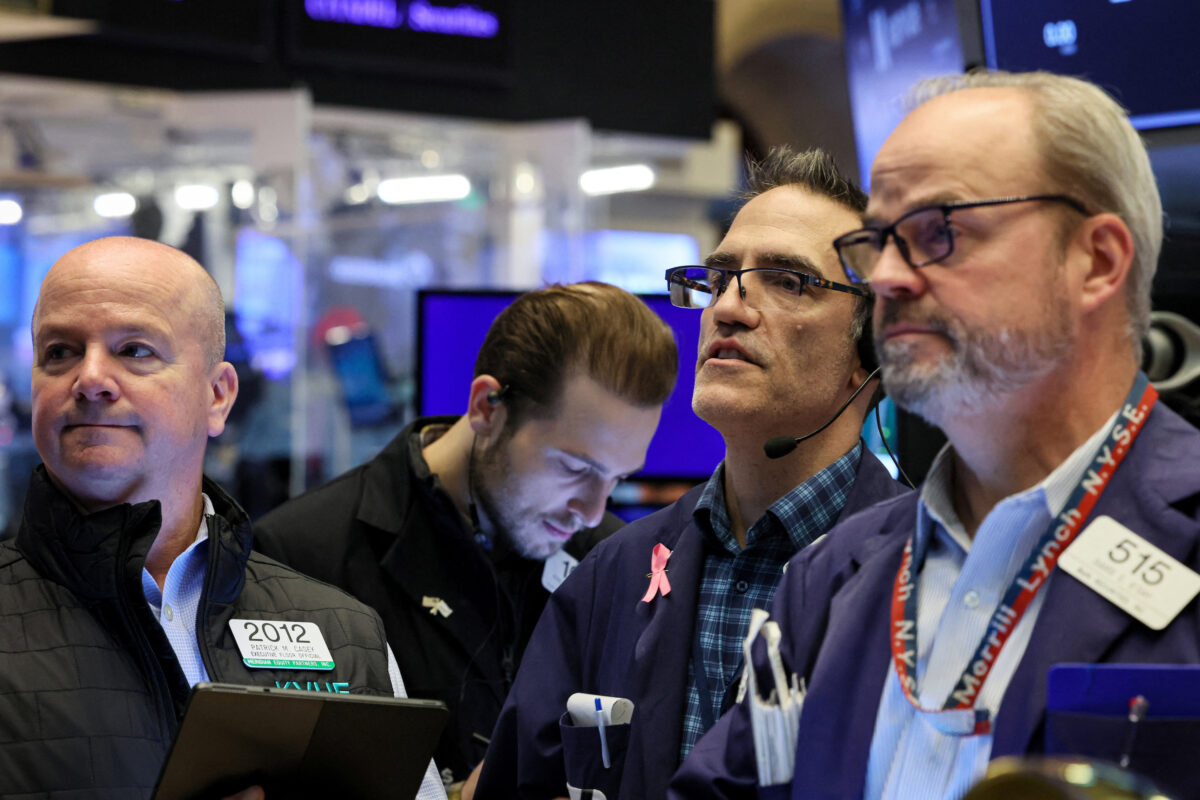


Wells Fargo Investment Institute is predicting a recession in the United States this year as a result of the Federal Reserve’s aggressive monetary tightening policy.
Wells Fargo is expecting a “global slowdown,” including a “moderate” recession in the United States this year, followed by a U.S.-led recovery in 2024, the firm’s 2023 Midyear Outlook report (pdf) said. The elevated interest rates and recession fears will “weigh” down on financial markets, it predicted.
“Of the last nine Federal Reserve tightening cycles, seven have resulted in recession. This current tightening cycle is the fastest and most aggressive since 1981 and makes it difficult to believe the U.S. economy can avoid a contraction when the dust eventually settles,” said Darrell Cronk, president of Wells Fargo Investment Institute.
“We believe the bear market of 2022 to 2023 is likely to evolve into recession during the back half of 2023 and into early 2024.” Since April 2022, the Federal Reserve has pushed up its benchmark interest rate from 0.5 percent to a range of 5 to 5.25 percent. The central bank has also suggested that two more rate hikes may be on schedule.
U.S. GDP growth is expected to fall from 2.1 percent in 2022 to 1.1 percent in 2023, followed by a 1.5 percent growth in 2024, per Wells Fargo. Consumer inflation is projected to decline from 6.5 percent in 2022 to 2.9 percent this year.
Wells Fargo sees “persistent credit tightening” as the “most visible threat” over the next 18 months. Though the economy avoided a credit crunch in March, there has been a decline in money supply and other liquidity sources that are starting to “increase financial stress, threatening housing as well as consumer and business borrowing,” it said.
The Midyear Outlook report expects the S&P index to be in a range of 4,000 to 4,200 by the end of 2023. As of June 16, the S&P 500 was at 4,409. A fall to 4,000 would thus require the index to decline by 9.27 percent from current levels.
There have been “two consecutive quarters of contraction” in terms of earnings in the S&P 500, the report points out. It predicts that a potential recession would “stall” corporate revenue growth this year.
“Once the recession appears to be fully priced in to market valuations, we expect an opportunity to position for an emerging 2024 recovery. Based on prior cycles, that time will likely come while the economy is still within the grips of the recession.”
Michael Hartnett, a strategist at the Bank of America, is expecting the current market rally to taper off. The S&P 500 has risen by over 15 percent year-to-date as of June 16. Recently, the index rose 20 percent above its low hit on Oct. 12, 2022. Technically, when a stock rises 20 percent or more from its lows, it is seen as a sign of a bull market.
However, Hartnett is not convinced that this is the beginning of a “brand, new shiny bull market,” he wrote in a note on Friday, according to Bloomberg.
The analyst said that the current market looks similar to what happened back in 2000 or 2008 when a “big rally” was followed by a “big collapse.” Hartnett sees up to 150 points in upside potential in the S&P 500 versus a 300-point downside potential until Labor Day.
Predictions of a U.S. recession have become more mixed in recent weeks. In a June 6 update, Goldman Sachs said that it cut the probability of a recession in the next 12 months from 35 percent to 25 percent. Goldman Sachs cited two reasons for this revamped view.
“First, the tail risk of a disruptive debt ceiling fight has disappeared. The bipartisan budget agreement to suspend the debt limit will result in only small spending cuts that should leave the overall fiscal impulse broadly neutral in the next two years,” it said.
“Second, and more importantly, we have become more confident in our baseline estimate that the banking stress will subtract only a modest 0.4pp from real GDP growth this year, as regional bank stock prices have stabilized, deposit outflows have slowed, lending volumes have held up, and lending surveys point to only limited tightening ahead.”
However, other institutions continue to warn about a potential recession hitting the United States this year. In a June 5 post, ING Bank said that the recent ISM manufacturing report “is already indicating recession, and the service sector will soon join it unless order books turn around dramatically.”
The Conference Board Leading Economic Index for the United States fell for the thirteenth consecutive month in April, signaling a “worsening economic outlook,” according according to a May 18 post. “The Conference Board forecasts a contraction of economic activity starting in Q2 leading to a mild recession by mid-2023.”
